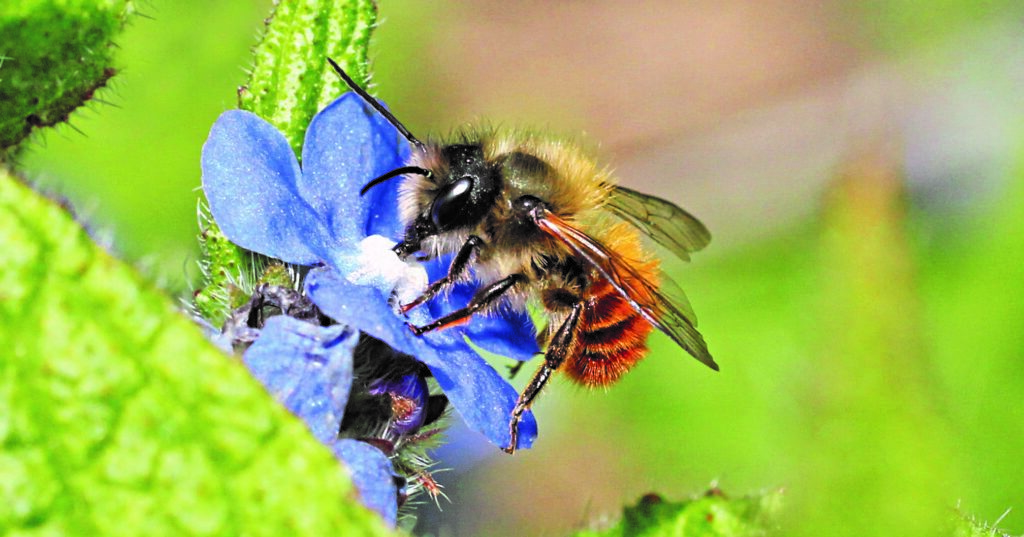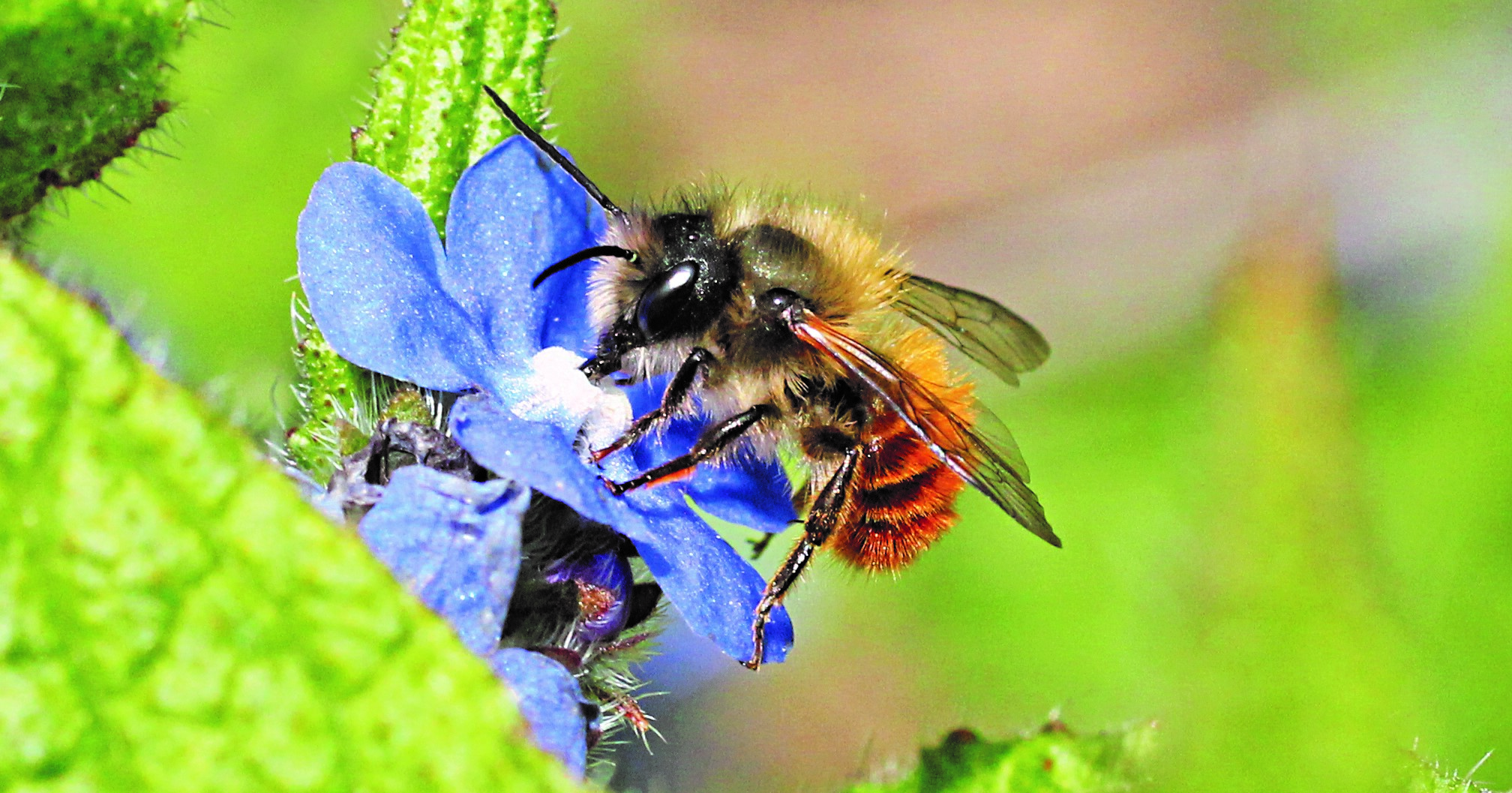13/04/2023

We have 13 mason bee species in the UK (over 300 worldwide). They get their common name from the way they plug their nests, either with mud, chewed leaf or a mixture of materials. The most common is the Red mason bee who nests in pre-existing cavities like hollow stems and wood and readily uses manmade bee hotels.
The males are checking out of bee hotels now by chewing through the mud-plugged tubes. They are fairly small (6-8mm) compared to a honeybee (12mm), fluffier and much cuter with their ginger/red coloured coats, round bottom and fluffy white moustache.
You’ll see them on blue-flowered Alkanet, tree blossom and buzzing around bee hotels waiting for females to emerge a few weeks later.
Like all solitary bees, they are docile and don’t make honey. They are important pollinators, especially of fruit trees collecting pollen on the underside of their abdomen. (Honeybees and bumblebees have pollen baskets on their back legs).
Females are a little bigger (8-10mm) and without the moustache. You may see them mating soon near to bee hotels.
Then they will be looking for clean cavities to lay their eggs and collecting pollen to provision the nest. You’ll see females foraging on many garden flowers and blossoming apple and pear trees. She also collects wet mud to divide up the tubes into separate bedrooms for each egg she lays. After she’s filled a tube with 7- 8 eggs and lots of pollen, she plugs it with mud. She may use 3 or 4 tubes and other Red mason bees may nest next door.
Amazingly, she lays female eggs at the back of the tube and males at the front, so they can easily check-out first.
By July, adult Red mason bees will have died leaving eggs to hatch into hungry, pollen-munching larvae which then spin a cocoon, pupate and through metamorphosis change into adult bees that emerges next spring.
Ways you can help Red Mason bees
1. Plant their favourite food, these short-tongued bees like open flowers:
- Alkanet
- Forget-me-not
- Perennial Wallflowers
- Hardy geranium (Cranesbill)
- Honesty
- Fruit tree blossom
- Horse Chestnut flowers
2. Provide a home
Place a bee hotel in a warm south or west-facing spot at least 1 metre off the ground. Ensure the bee hotel is securely fastened so as not to swing around in the wind, and the bees have a clear flight path in and out without overhanging tree branches or ivy.
If you are buying a bee hotel, make sure the bamboo or cardboard tubes are 150mm long with diameters of around 6-8mm.
For other bees to see this month, how to tell them apart and how to help them sign up to Alison’s Buzz newsletter
Words: Alison Benjamin, Urban Bees
Photo credits: Penny Metal


